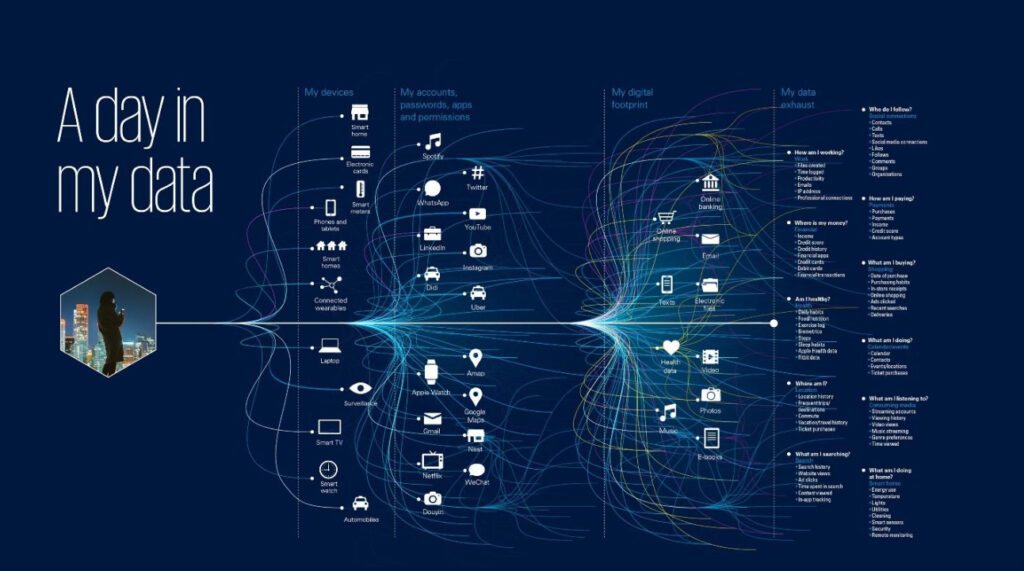Around the world, from sector to sector, companies are locked in a battle for growth.
Facing intensifying competition, many are struggling to understand the wide variety of trade-offs customers are willing to make and the forces impacting their decisions.
And for many customers, the past is no longer a reliable indicator of future behavior. A variety of macro- and micro-demographic and economic shifts, along with accelerated mass adoption of new technologies, are having multifaceted impacts on consumer behavior. These shifts are signals of change, and they can be detected in two forms — short-wave and long-wave.
Short-wave signals
Short-wave signals emanate from micro events and extracts of information that tell the complex story of our lives as consumers. They include with whom we connect and follow and our social media likes and interactions; the information and media we consume; where we go, when and how we get there; what we buy, when and where we buy it, whether online or offline; and where we have it shipped, how often we reorder it and how we pay.
The vast data trails emerging from our deepening relationships with technology and the pervasiveness of our devices provide contextual data or clues on almost all facets of our lives. This short-wave data reveals what we did, but it doesn’t explain our underlying motivations or divulge the “why” behind our decisions. Making decisions based on this data likely assumes the future looks like the past.

Consider this example of short-wave signals. Lily is a married Gen Xer from Shanghai with two children. For the last ten years, she and her family have taken a week-long summer vacation at the same Ritz-Carlton hotel in Hong Kong’s West Kowloon district, at the same time of year. This year, however, Lily changed jobs and now works remotely.
Instead of her traditional vacation, she invested in renovating a new home office. Does the hotel assume that Lily, a loyal Ritz-Carlton customer for years, has switched to another brand? Or that the family’s holiday needs have changed? Purchase behavior alone doesn’t reveal that the travel share of Lily’s wallet has been reallocated to a completely different category: home improvement.
Long-wave signals
Long-wave signals are external, macro events that impact our experience, influence our values and behavior and provide context for what motivates and drives us. They influence how we connect to each other and the world around us and where we focus our time and attention.
Long-wave signals emerge over time, in the form of demographic shifts and STEP (social, technological, economic and market, political and regulatory) events experienced by each generation. In isolation, long-wave signals can appear too removed to detect a direct impact on a customer purchase or behavior. However, for companies paying attention to them, these signals help get to the “why” behind human decision making and, importantly, how it’s changing.
Here is an example of the effects of long wave signals. Steve and Jane are boomer parents. They married early, secured blue-chip jobs, bought a house and had two children. They invested and lived through the highs and subsequent lows of the dot-com bubble and bust.
After 9/11, they purchased a bigger house to secure a tangible place in an uncertain world. When the 2008 financial crisis hit, they sold their stocks. Real estate values plummeted, pushing their new home into negative equity. Steve lost his blue-chip job as the prolonged downturn continued, and their equity is tied up in a house that’s become a burden. The value of their cash and bonds is limited by low interest rates. Now they lack the ability to fund a looming retirement. Their life events have influenced every purchase choice they have made and the shape of their wallet in the future.
Putting it all together
Short and long-wave signals are each important, but the real power lies in putting them together to understand the macro and the micro in context. Finding the right ways to mine and analyze these signals will help companies better predict their customers’ changing needs and expectations, and what’s more, the forces that influence when, where, how, and why we open and close our wallets.
Data science and machine learning take the input of short-wave signals (data) and build statistical models to be able to make decisions about the future. Whether it’s classification, regression, or clustering, at heart they are different ways of modeling the present to predict the future.
Making sense of long wave signals is different, and more about spotting patterns. Interpreting long-wave signals is best tackled with design thinking methods which encourage divergent thinking and challenge assumptions. Design thinking allows us to explore the art of the possible to get to the “so what’s” of long-wave signals.
In short, if you want to ensure your company will continue to meet and exceed customer needs, putting together short and long wave signals is vital. This synthesis may be complex, but ultimately can help you solve for the future.
Featured image credit: freepik








